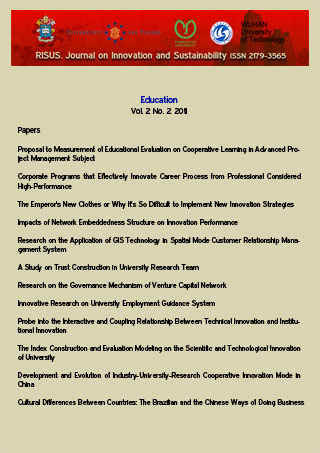Cultural Differences Between Countries: The Brazilian and the Chinese Ways of Doing Business
DOI:
https://doi.org/10.24212/2179-3565.2011v2i2p77-83Palabras clave:
Cultural Differences, Business, Brazil and China.Resumen
Each country has its own cultural backgrounds and standards of thinking, being and acting, and these cultural differences strongly influence the business world. The purpose of this paper is to present some cultural differences between countries highlighting the Brazilian and Chinese examples. Many are the cultural aspects within a society; therefore this paper will emphasize how these aspects can have an impact in business in both cultures, having as a background the basic cultural points of each country. Brazil and China will be analyzed through the Hofstede (2001) dimensions which measure cultural differences. This paper gives a short overview to provide an understanding on how cultural similarities and cultural differences are important when doing business in the mentioned countries. The authors propose that the more acquainted one is with a culture, the more successful his/ her business will become. In addition, it is necessary to evaluate which cultural issues have an impact when it comes to business.Descargas
Número
Sección
Papers
Licencia
This Journal is licensed under a Creative Commons Attribution-Non Commercial-No Derivers 4.0 International license.
1.The author (s) authorize the publication of the article in the journal;
2.The author (s) warrant that the contribution is original and unpublished and is not in the process of being evaluated in other journal (s);
3. The journal is not responsible for the opinions, ideas and concepts emitted in the texts, as they are the sole responsibility of its author (s);
4. The editors are entitled to make textual adjustments and to adapt the articles to the standards of publication.


